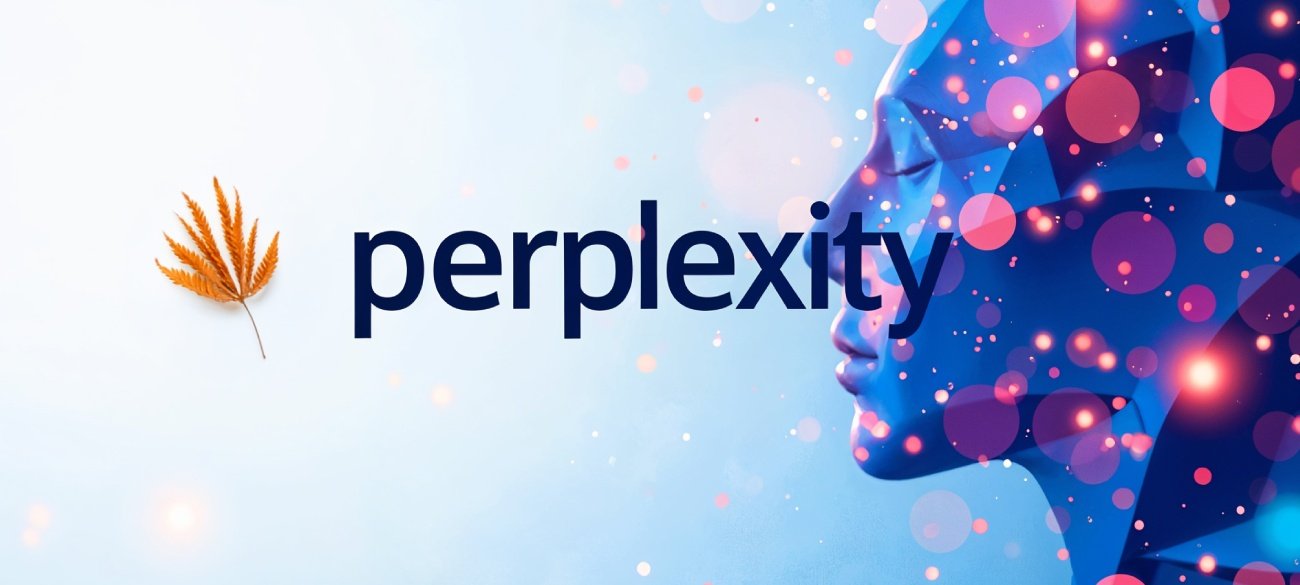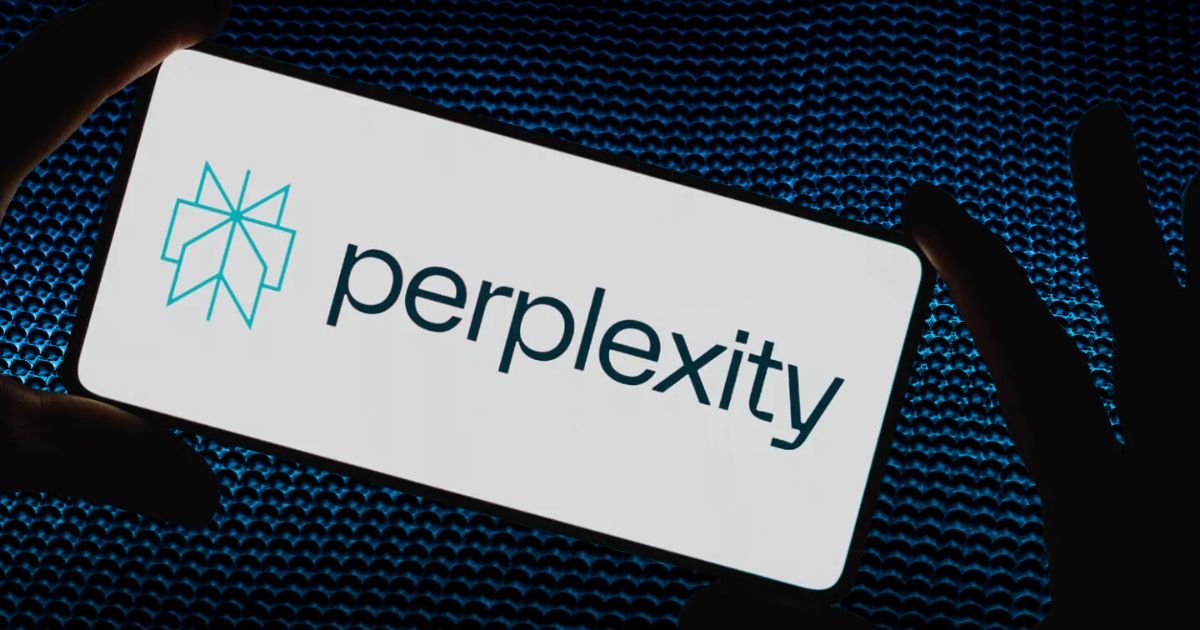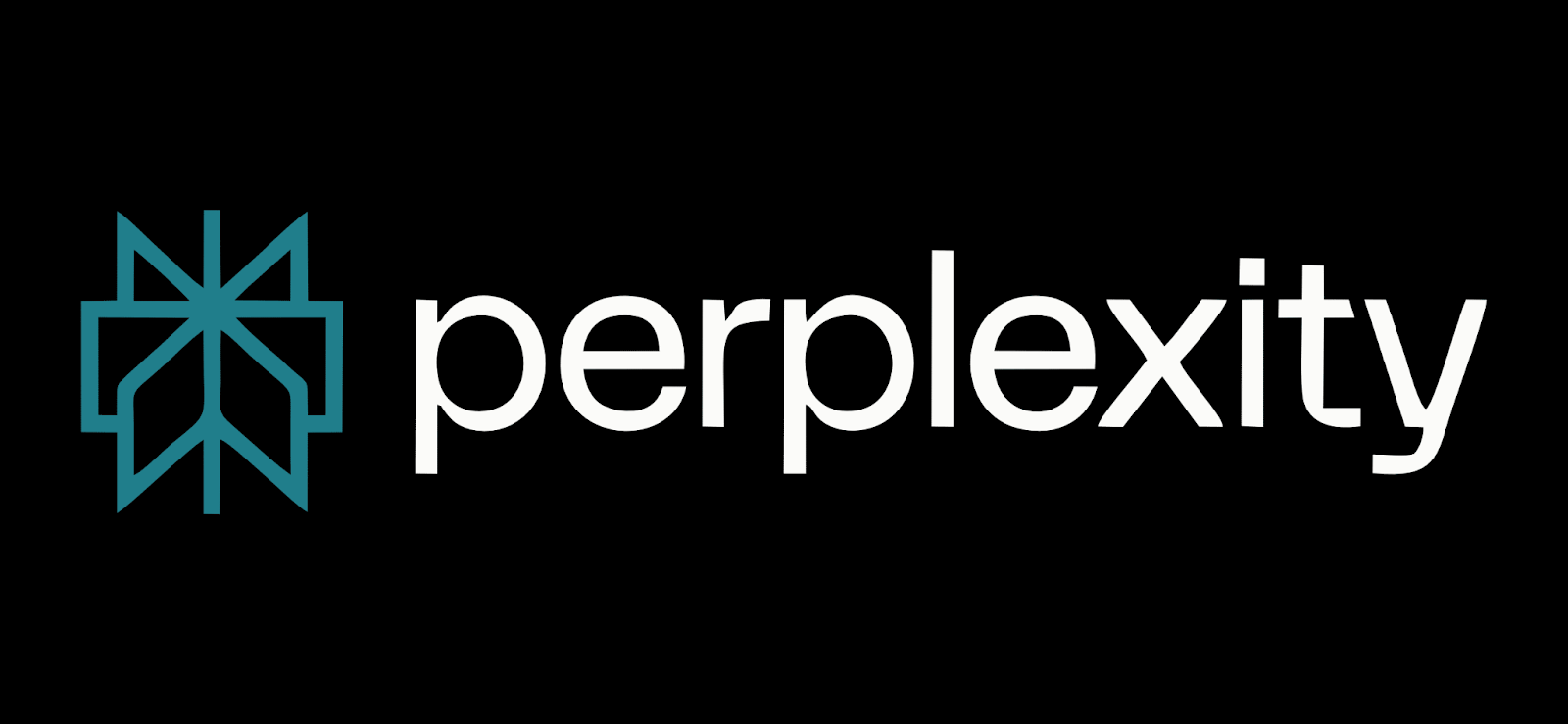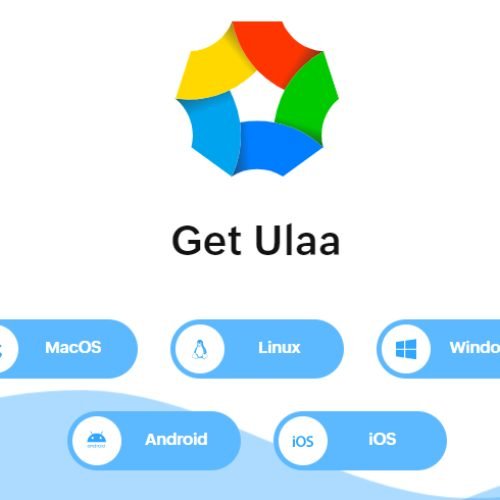Table of Contents
ToggleBoost Your Research with Perplexity AI: A 2025 Guide

Introduction The Rise of AI in Research
In today’s digital-first world, artificial intelligence is no longer just a buzzword it’s an essential research tool. From academics and scientists to students and professionals, everyone is looking for faster, smarter ways to gather and synthesize information. That’s where Perplexity AI comes in. This next-generation research assistant is transforming how we search, learn, and analyze data in 2025.
What is Perplexity AI?
Perplexity AI is an AI-powered answer engine and research assistant that combines the power of machine learning, natural language processing, and real-time data fetching. Unlike traditional search engines that provide a list of links, Perplexity AI delivers direct, context-aware answers supported by citations. It doesn’t just fetch information—it understands your intent.
By using state-of-the-art large language models (LLMs), Perplexity AI can generate concise, well-sourced responses that accelerate knowledge discovery.
Key Features That Make Perplexity AI Stand Out
Real-Time Data Retrieval: It pulls up-to-date information from the web, making it ideal for current topics.
Cited Sources: Every answer includes citations, so you know exactly where your data is coming from.
Interactive Follow-Ups: You can ask follow-up questions and refine results without starting from scratch.
Multimodal Input: Perplexity AI now supports image and document inputs, helping you expand your research sources.
These features help researchers and content creators validate facts, identify trends, and develop new insights faster than ever.
How to Use Perplexity AI for Smarter Research
Whether you’re writing a thesis, working on a project, or just learning something new, using Perplexity AI is simple:
Ask a clear question – Start with a specific query, like “Impact of climate change on agriculture in India.”
Review the response and sources – Perplexity AI gives summarized insights with links to credible sources.
Refine your search – Use follow-up questions to dig deeper or explore related topics.
Download or export results – You can copy, bookmark, or export key findings to your notes or documents.
This guided, conversational search process allows you to stay focused and save time.
Real-World Use Cases for Students, Professionals, and Researchers
Students can use it for writing assignments, understanding concepts, and finding academic references.
Researchers benefit from its real-time web access and ability to quickly summarize studies or datasets.
Professionals use it for market research, competitive analysis, and content creation.
For example, a medical researcher can ask Perplexity AI about recent advancements in gene therapy and get both a summary and citations from trusted journals.
Tips to Maximize Perplexity AI’s Potential
Use precise and contextual prompts
Ask follow-up questions for in-depth insights
Save or organize research findings for easy access
Double-check citations for academic integrity
Combine it with traditional research tools for comprehensive results
By integrating these habits, you’ll unlock the full potential of Perplexity AI in your workflow
Why Perplexity AI Matters for Researchers

Why Perplexity AI Matters for Researchers
In a time when access to accurate, timely information is more important than ever, Perplexity AI stands out as a powerful ally for researchers. Whether you’re working on academic papers, market analysis, scientific studies, or business intelligence, Perplexity AI provides a smarter, faster, and more efficient way to discover relevant insights.
Traditional search engines deliver hundreds of links, leaving users to dig through pages of information to find what they need. Perplexity AI, on the other hand, revolutionizes the research process by offering direct, cited answers drawn from trusted sources. This significantly reduces the time spent verifying facts and hunting for credible references, allowing researchers to focus on analysis and critical thinking.
One of the major benefits of Perplexity AI is its natural language processing capability. Researchers no longer have to phrase their questions in precise keywords; instead, they can type their queries in everyday language and receive detailed responses. This makes complex topics more accessible and streamlines the discovery process, particularly for those exploring interdisciplinary subjects.
Moreover, Perplexity AI supports iterative learning. As researchers refine their questions or explore follow-up inquiries, the AI provides increasingly nuanced information, building a thread of context. This continuity is invaluable for deep research where understanding evolves over time.
The AI also excels in presenting multi-perspective insights. For instance, when researching controversial topics or emerging trends, Perplexity AI can surface contrasting viewpoints and highlight the most up-to-date developments. This helps researchers maintain objectivity and build more balanced, well-informed conclusions.
In a rapidly changing information landscape, where data is constantly being generated, Perplexity AI ensures that researchers stay ahead. It integrates real-time updates, making it possible to include the latest studies, statistics, or news articles in your work without spending hours tracking sources.
Finally, its intuitive interface and citation features make it especially useful for academic and professional writing. You not only get quick answers but also ready-to-use references, streamlining your bibliography and ensuring transparency.
In summary, Perplexity AI isn’t just a convenience tool—it’s a research partner that enhances accuracy, saves time, and improves the quality of insights. For any researcher in 2025 and beyond, leveraging this AI assistant can be the difference between average output and groundbreaking results.
Key Features that Set Perplexity AI Apart

Key Features that Set Perplexity AI Apart
In an AI-saturated world, Perplexity AI has carved a unique space by blending intelligent search with conversational understanding. Unlike traditional search engines or even some generative AI platforms, Perplexity AI offers a hybrid experience—one that delivers both speed and substance. Here are the key features that truly set Perplexity AI apart for researchers, students, and professionals alike.
1. Conversational Search with Cited Sources
One of the most powerful features of Perplexity AI is its ability to respond in natural, human-like language while backing up its answers with credible sources. Each response includes clickable citations, allowing users to verify facts and explore original materials. This reduces guesswork and increases trust in the information provided.
2. Real-Time Web Access
Unlike static language models, Perplexity AI taps into real-time web data. This ensures that users always receive the most current and relevant information available. For fields like finance, healthcare, and technology—where things change quickly—this feature is indispensable.
3. Follow-Up Question Threading
Research is rarely one-and-done, and Perplexity AI understands that. It supports conversational threading, meaning users can ask follow-up questions and build upon previous answers without starting over. This creates a coherent research journey and allows for deeper exploration of a topic.
4. User-Friendly Interface
Ease of use is another hallmark of Perplexity AI. Its clean, distraction-free interface ensures that users can focus on content, not navigation. The platform requires no steep learning curve, making it ideal for both beginners and advanced users.
5. Multimodal Capabilities
With growing support for various data types—text, code, and even some visual content—Perplexity AI is evolving into a versatile assistant. This feature is especially useful for cross-disciplinary researchers who work with diverse content formats.
6. Privacy and Minimal Ads
Unlike many competitors, Perplexity AI places user experience above monetization. With minimal to no ads and strong privacy practices, it ensures that your research remains uninterrupted and secure
Step by Step How to Use Perplexity AI for Academic & Market Research

Step by Step How to Use Perplexity AI for Academic & Market Research
Navigating the vast digital landscape can be overwhelming for students, analysts, and professionals alike. That’s where Perplexity AI comes in streamlining your research process with intelligent, conversational tools. Whether you’re crafting a thesis or building a market report, here’s a step-by-step guide on how to make the most of Perplexity AI.
Step 1: Define Your Research Question Clearly
Start with a well-structured question. Whether it’s “What are the latest trends in renewable energy?” or “How does inflation impact consumer behavior?”, the more specific your query, the more precise Perplexity AI will be in its response.
Step 2: Type Your Query in Natural Language
One of Perplexity AI’s strengths is its ability to understand everyday language. No need for keyword stuffing simply ask your question conversationally, just like you would with a human research assistant.
Step 3: Review the AI’s Initial Response and Sources
Perplexity AI not only provides answers but also cites its sources. Click through the links to verify facts, extract quotes, or explore primary content. This is especially useful for academic referencing and citation building.
Step 4: Use Follow-Up Prompts for Deeper Insights
Research is iterative. After the first answer, use follow-up questions like “Can you elaborate on point 3?” or “What are the regional differences?” Perplexity AI retains context across questions, helping you build a coherent thread of discovery.
Step 5: Extract Data and Statistics for Reports
When working on market research, ask for specific stats, graphs, or current trends. Perplexity AI can pull recent data from reputable online sources, saving you hours of manual search time.
Step 6: Compile and Organize the Output
Use the AI’s structured answers to draft sections of your paper or report. With well-cited responses, you can directly integrate findings into your literature review, executive summary, or data analysis.
Step 7: Double Check and Cross Verify
While Perplexity AI is highly accurate, always verify critical information from at least one additional source especially for peer reviewed or publication level work
Use Cases Across Different Research Fields

Use Cases Across Different Research Fields
Perplexity AI is not just another search tool—it’s a versatile AI-powered assistant tailored to support deep research across multiple disciplines. Whether you’re an academic, analyst, scientist, or student, this tool enhances your ability to find, understand, and apply knowledge. Here’s how Perplexity AI is making a meaningful impact across various research fields.
1. Academic Research
In education and academia, Perplexity AI is a game-changer. Students and scholars use it to generate literature reviews, summarize journal articles, and find credible sources quickly. By asking questions in natural language, users receive well-structured, citation-supported answers that can be used for essays, dissertations, and scholarly publications.
2. Market Research
Marketers and business analysts rely on Perplexity AI to track emerging trends, competitor analysis, and consumer behavior. The platform can surface real-time data, synthesize industry reports, and extract meaningful insights from across the web. This makes it invaluable for creating white papers, product strategies, and campaign plans.
3. Healthcare and Medical Research
Medical professionals can use Perplexity AI to access the latest studies, treatment protocols, and drug interactions. With citations from trusted sources like PubMed or WHO, the AI ensures that healthcare research remains evidence-based and up-to-date—an essential factor in clinical decision-making.
4. Scientific and Technical Research
Researchers in fields like physics, chemistry, computer science, and engineering use Perplexity AI to understand complex theories, find peer-reviewed studies, and interpret technical language. It can explain concepts at various levels, from beginner to expert, making it a valuable learning companion.
5. Legal and Policy Research
Law students and policy researchers benefit from the AI’s ability to summarize legal texts, case law, and government regulations. Perplexity AI helps users compare jurisdictions, understand legal frameworks, and access historical policy data—crucial for writing briefs or policy proposals.
6. Journalism and Media
Writers and journalists use Perplexity AI for fact-checking, sourcing quotes, and exploring story angles. Its up-to-date knowledge base and real-time web access ensure reporting stays accurate and timely.
Tips to Maximize Your Results with Perplexity AI

Tips to Maximize Your Results with Perplexity AI
Perplexity AI offers a fast, intelligent, and user-friendly platform for research, but getting the most out of it requires more than just typing in a question. Whether you’re using it for academic, technical, or market research, these expert tips will help you unlock the full potential of Perplexity AI and ensure your results are accurate, relevant, and insightful.
1. Be Specific with Your Queries
The more detailed your question, the better the response. Instead of asking “What is inflation?”, try “What are the primary causes of inflation in emerging markets in 2025?” Perplexity AI uses advanced natural language understanding, so precision in your input leads to precision in output.
2. Use Follow-Up Questions Effectively
Don’t stop after your first question. One of the most powerful features of Perplexity AI is its ability to handle follow-up prompts in context. Ask for elaboration, deeper analysis, or opposing viewpoints. This helps you build a more nuanced understanding of the topic.
3. Review and Click on Cited Sources
Every response from Perplexity AI comes with clickable citations. Use them! Verifying the original sources not only adds credibility to your research but also exposes you to more detailed information that might be beyond the summary response.
4. Experiment with Different Phrasings
Sometimes rephrasing your query can yield new or better insights. For instance, “climate change impact on agriculture” might return different results than “how is global warming affecting farming in India?” Test variations to see which gives the clearest response.
5. Combine Perplexity AI with Other Tools
While Perplexity AI is powerful, it works even better when used alongside databases like Google Scholar, JSTOR, or Statista. Use the AI to explore and narrow your research scope, then dive deeper with specialized databases for robust academic or professional work.
6. Stay Updated with New Features
Perplexity AI continues to evolve. Keep an eye on new updates such as file uploads, image-based queries, or expanded citation tools. Staying current helps you make use of its full capabilities as it grows.
Challenges & Limitations to Be Aware Of

Challenges & Limitations to Be Aware Of
While Perplexity AI offers significant advantages for research and information retrieval, it’s important to approach the tool with a clear understanding of its current limitations. Like any AI-powered platform, Perplexity AI is not perfect and knowing where it may fall short can help you use it more responsibly and effectively.
1. Source Reliability and Bias
Although Perplexity AI pulls from reputable sources, it sometimes references content that may be outdated, biased, or misinterpreted. Researchers must review and evaluate the original sources themselves to ensure accuracy, especially for academic or policy-driven work. Never rely solely on the AI’s summary—always verify.
2. Limited Domain Expertise
While Perplexity AI is trained on a wide range of subjects, it may not perform as well when asked to provide highly specialized or deeply technical insights, such as complex medical diagnoses or cutting-edge scientific theories. It can simplify advanced content, but its interpretations may lack depth or precision.
3. Real-Time Data Gaps
Despite offering real-time web access, Perplexity AI may not always catch breaking news, the latest research publications, or live statistical data instantly. Time sensitive information such as stock movements, government announcements, or live events should be double checked using official or dedicated platforms.
4. Misunderstanding Nuanced Questions
AI language models, including Perplexity AI, can struggle with context heavy or abstract queries. Ambiguous questions or those involving sarcasm, irony, or layered logic may return inaccurate or incomplete responses. Refining your questions is key to improving result quality.
5. Incomplete Citations or Broken Links
At times, Perplexity AI may provide responses with incomplete citations or non-functional hyperlinks. This can disrupt the research flow, especially if you’re building a reference list. Always test the provided links and locate original documents when necessary.
6. Lack of Human Judgment
AI lacks emotional intelligence and ethical reasoning. When researching sensitive topics like social justice, ethics, or mental health, Perplexity AI can provide facts but it cannot replace human sensitivity, lived experience, or critical interpretation.
Future Trends What’s Next for Perplexity AI in 2025

Future Trends What’s Next for Perplexity AI in 2025
As artificial intelligence continues to evolve, Perplexity AI is poised to become more than just a search and research assistant it’s on track to redefine how we interact with knowledge itself. The year 2025 brings exciting possibilities for how Perplexity AI will grow in both capability and scope. Here are the major trends shaping its future.
1. Deeper Integration with Productivity Tools
In 2025, we can expect Perplexity AI to be integrated more seamlessly into tools like Google Docs, Microsoft Word, Notion, and research platforms. This will allow users to conduct real-time research, generate citations, and summarize sources without switching apps. For researchers, this creates a smoother workflow and increases productivity.
2. Enhanced Personalization Through AI Memory
One of the most anticipated upgrades is context-aware memory. Soon, Perplexity AI will remember previous searches, understand user preferences, and adapt responses based on ongoing research goals. This personalized interaction can significantly reduce repetitive tasks and improve answer relevance over time.
3. Multimodal Capabilities and Visual Understanding
By mid-2025, Perplexity AI is expected to support more advanced multimodal features interpreting not just text, but also charts, graphs, PDFs, and even images. For market analysts, students, and journalists, this opens up new ways to analyze visual data and extract insights from complex content formats.
4. Real Time Collaboration and Shared Research Threads
Imagine a shared research space where multiple users can query Perplexity AI, review answers collaboratively, and build collective knowledge threads. Collaborative features like these are likely on the horizon, transforming how teams conduct research in academic, corporate, or creative settings.
5. Voice and AR/VR Integration
With AI moving into voice activated devices and immersive experiences, Perplexity AI may soon be part of augmented reality research assistants or wearable interfaces. This would allow hands-free, real-time data retrieval ideal for engineers, healthcare workers, or educators in field settings
Ethics and Limitations of AI

Ethics and Limitations of AI
As Artificial Intelligence (AI) becomes increasingly powerful and widespread, it’s essential to understand not only its capabilities but also its ethical concerns and limitations. While AI can improve lives, increase efficiency, and drive innovation, it also raises serious questions about privacy, bias, accountability, and control.
This topic is a key part of every responsible Free AI Course, helping learners think critically about the implications of AI in the real world.
Ethical Concerns in AI
Bias and Discrimination
AI systems learn from historical data. If that data contains biases—racial, gender, or otherwise—AI can unintentionally reinforce and amplify discrimination. For example, hiring algorithms trained on biased datasets might favor certain groups over others.Lack of Transparency (Black Box Problem)
Many AI models, especially deep learning networks, make decisions that are hard to explain. This lack of transparency can be dangerous, especially in fields like healthcare or criminal justice.Job Displacement
Automation powered by AI may lead to the replacement of human workers, particularly in repetitive or manual jobs. This raises social and economic concerns about unemployment and the future of work.Privacy Violations
AI systems often rely on large amounts of personal data. Without strict regulation, there is a risk of invasive surveillance and misuse of sensitive information.Autonomy and Control
As AI systems become more advanced, who is responsible when they make a mistake? Can they be controlled if they act unpredictably? These questions highlight the importance of ethical AI governance.Limitations of AI
Despite its impressive capabilities, AI still has important limitations:
Lacks Common Sense: AI can’t truly understand the world the way humans do.
Dependent on Data: Poor-quality or insufficient data leads to poor AI performance.
Narrow Scope: Most AI today is task-specific (ANI) and cannot generalize like humans.
Energy Consumption: Training large AI models requires enormous computational resources.
Final Thoughts Should You Rely on Perplexity AI for Research?

Final Thoughts Should You Rely on Perplexity AI for Research?
As we navigate an increasingly data driven world, tools like Perplexity AI are no longer just convenient they’re becoming essential. Whether you’re conducting academic research, compiling a market report, or simply exploring a complex topic, Perplexity AI offers powerful support through intelligent search, citation-backed answers, and real-time access to information.
The real strength of Perplexity AI lies in its ability to simplify complexity. Instead of combing through countless articles or reports, users can ask direct questions and receive synthesized, well-structured answers in seconds. This doesn’t just save time it enhances the quality of insights by presenting multiple perspectives and credible sources all in one place.
However, while Perplexity AI can significantly streamline the research process, it should be seen as a complement not a replacement for human judgment, critical thinking, and traditional scholarly methods. AI tools still have limitations. They may occasionally misinterpret nuanced queries, cite outdated sources, or miss the depth that a seasoned researcher brings to complex analysis.
That said, the tool’s ability to handle natural language, adapt to follow-up queries, and present source-backed responses makes it a game-changer especially for students, educators, journalists, and professionals looking to maximize research efficiency.
If your goal is to enhance productivity, gather reliable data, and explore topics quickly, Perplexity AI is absolutely worth integrating into your workflow. Just be mindful of its boundaries. Cross-check important facts, evaluate sources critically, and use it in tandem with traditional databases and peer reviewed journals when accuracy is critical.
In the context of 2025 and beyond, relying on Perplexity AI for research isn’t just practical it’s strategic. It empowers users to stay agile, informed, and competitive in a fast moving knowledge economy. But like all tools, its effectiveness depends on how thoughtfully it is used.
Frequently Asked Questions (FAQs) about Perplexity AI
Q1. What is Perplexity AI?
Perplexity AI is an AI-powered search and research tool that combines conversational understanding with real-time web access. It provides direct, cited answers to user queries, helping researchers, students, and professionals find reliable information faster.
Q2. How is Perplexity AI different from Google or ChatGPT?
Unlike traditional search engines like Google, Perplexity AI provides concise answers backed by sources instead of just listing links. Compared to ChatGPT, it focuses more on real-time search and reference-based outputs, making it ideal for fact-checked, research-intensive work.
Q3. Can I use Perplexity AI for academic research?
Yes, Perplexity AI is highly suitable for academic research. It can help you draft essays, summarize journal articles, generate citations, and explore complex topics across disciplines. However, always verify its sources and supplement with scholarly databases.
Q4. Is Perplexity AI free to use?
Perplexity AI offers both free and paid plans. The free version gives you access to basic features, while premium plans provide advanced capabilities such as Pro search, document analysis, and deeper integration with research workflows.
Q5. Does Perplexity AI provide citations?
Yes. One of the key features of Perplexity AI is its ability to provide citations with each response. These are clickable, source-backed references, making it easier to verify information and build your own bibliography.
Q6. How accurate is Perplexity AI?
Perplexity AI is highly accurate when answering general and moderately complex questions, especially those based on recent web content. However, like all AI tools, it may sometimes provide outdated or incomplete information, so fact-checking is essential.
Q7. Can Perplexity AI replace human researchers?
No, Perplexity AI is a powerful support tool, not a replacement for human judgment. It enhances research productivity but should be used alongside critical thinking, peer-reviewed sources, and professional expertise.
Q8. What are the limitations of Perplexity AI?
Limitations include occasional citation errors, difficulty with highly specialized topics, lack of emotional or ethical reasoning, and an over-reliance on internet-based data. Users should remain cautious when using it for high-stakes or sensitive content





